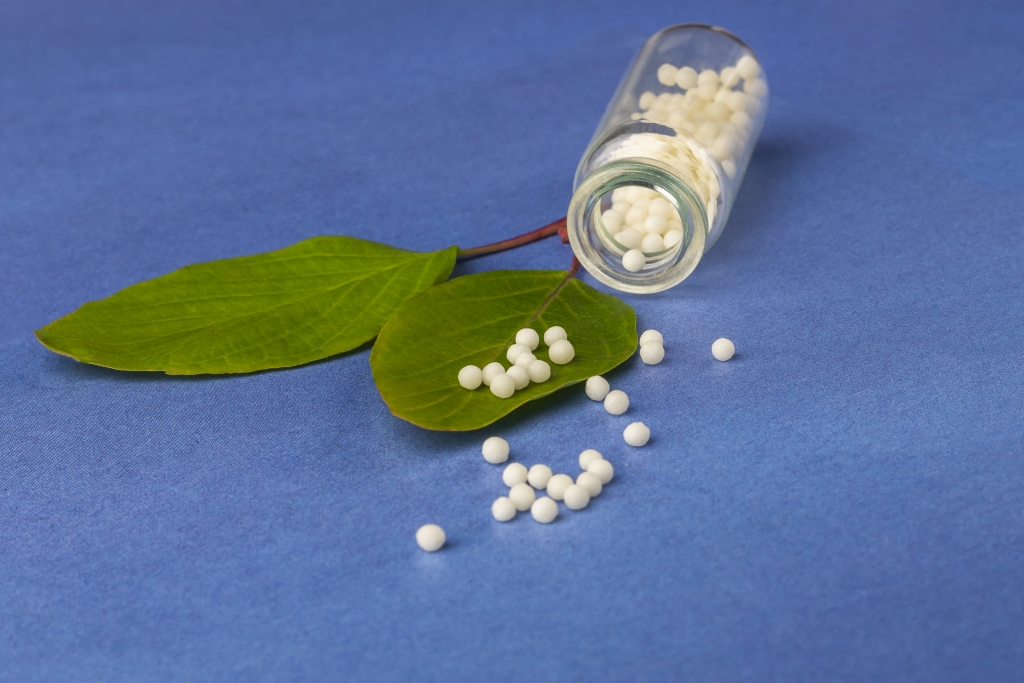So many of us are looking forward to the end of this pandemic; the end of this chapter in history.
But did you know that…
Epidemics have perturbed humankind throughout history — be it the plague in Europe in the Middle Age, yellow fever, smallpox in the Americas, the worldwide flu pandemic of 1918–1919, which is estimated to have killed 50 to 100 million people, or more recent epidemics, such as encephalitis, Zika, swine flu, Ebola, influenza, chikungunya, dengue, SARS, Covid-19, etc.?
With this in mind, we ought to wonder: what have we learned from our history of epidemics?
A historical review of the use of homeopathy in epidemics
EPIDEMICS: 1779 – 1918
In 1852, British allopathic physician Dr. Routh was the authority appointed by the London medical officials to collect the mortality statistics for all diseases in different hospitals (located in England, Germany, and Austria). A total of 32,655 homeopathic cases and 119,630 allopathic cases were presented. The mortality rate for those using homeopathic treatments was 4.4%, whereas the overall mortality rate under allopathic treatments was 10.5%.
| Year | Location | Disease | Treatment by Homeopathy | Treatment by Allopathy | Treatment with No Medicine |
| 1799 | Königslütter, Germany | Scarlet Fever | Mortality <5% | ||
| 1830 ~ ‘31 | Russia | Cholera | Mortality 11 %Reported by Imperial Council & Foreign Ministry of Russia. | Mortality 63 %Reported by Imperial Council & Foreign Ministry of Russia. | Not recorded. |
| 1830 ~ 1832 | Vienna, Prague, Hungary and Moravia | Cholera | Mortality 7 %Reported by Dr. Kath, appointed by King of Bavaria. | Mortality 31 %Reported by Dr. Kath, appointed by King of Bavaria. | Not recorded. |
| 1836 | Vienna | Cholera | Mortality 33 %Lead Homeopath in charge was Dr. FleischmannReported by Dr. Wild, Allopathic editor of Dublin Quarterly Journal | Mortality 66 %Reported by Dr. Wild, Allopathic editor of Dublin Quarterly Journal | |
| 1847 | Ireland | Typhus fever | Mortality 2 %Lead Homeopath in charge was Dr. Joseph Kidd | Mortality 13 %Lead Allopath in charge was Dr. Abraham Tuckey | Not recorded. |
| 1847 | England | Typhus fever | Mortality 2 % | Mortality 13 % | Mortality 10 % |
| 1848 | Edinburgh, Scotland | Cholera | Mortality 24 %Reported by Edinburgh Dispensary. | Mortality 68 %Reported by Edinburgh Dispensary. | Not recorded. |
| Mid 1800’s | Austria | Pneumonia | Mortality 5 %Lead Homeopath in charge was Dr. Fleischmann | Mortality 20 %Lead Allopath in charge was Dr. Dietl | Not recorded. |
| 1853 ~ 1855 | South of America | Yellow fever | Mortality 5.4 %Lead Homeopaths in charge were Dr. F. Davis and Dr. W. Holconibe | Mortality 55% | Not recorded. |
| 1854 | London, England | Cholera | Mortality 16.4 %Reported by Royal College of Physicians. | Mortality 59.2 %Reported by Royal College of Physicians. | Not recorded. |
| 1878 | New Orleans, Memphis, USA | Yellow fever | Mortality 6% %Special Commission reported the statistics. | Mortality 15.5 % Special Commission reported the statistics. | Not recorded. |
| 1918 | Pittsburgh, USA | Spanish Influenza | Mortality 1.05 %Reported by Dean, Pittsburgh Hospital | Mortality 30 %Reported by Dean, Pittsburgh Hospital | Not recorded. |
EPIDEMICS IN USA
Looking back to the year 1873, a statistical report was presented by Dr. E. Kellogg (New York), Dr. P. Dudley (Philadelphia), E. Russell (Boston). The following table is a summary of their general statistics
General statistics:
| City | Year | Number of Deaths under Allopathic | Ratio | Number of Deaths under Homeopathic | Ratio |
| New York | 1870 | 14,869 | 15 | 1,287 | 9 |
| New York | 1871 | 15,526 | 15 | 1,243 | 7 |
| Boston | 1870 | 3,872 | 17 | 402 | 10 |
| Boston | 1871 | 3,369 | 14 | 363 | 8 |
| Boston | 1872 | 4,575 | 19 | 446 | 8 |
| Philadelphia | 1872 | 12,468 | 19 | 2,162 | 12 |
| Total: 54,679 | Total: 5,903 |
From 1874 to 1877 in the U.S.:
| Disease type in hospitals | Mortality under Allopathic Treatment | Mortality under Homeopathic Treatment |
| General diseases | 10% | 5% |
| Cholera | 54% | 27% |
| Pneumonia | 14% | 6% |
| Typhus fever | 21% | 10% |
Consider the following examples.
1800: Austria, Cholera epidemic
During this epidemic, the allopathic mortality rate was 66%, while the homeopathic mortality rate was 33%. “On account of this extraordinary result, the law interdicting the practice of Homeopathy in Austria was repealed,” wrote Dr. Wild, the editor of the Dublin Quarterly Journal of Medicine.
1974: Brazil, Meningitis epidemic
A homeopathic remedy was given as prophylactic with an effectiveness of 95.7%.
1996: India, Dengue hemorrhagic fever epidemic
Homeopathy was administered to 39,200 people in the Delhi area. Ten days later, the check-up of 23,520 people revealed that only five people (0.125%) had developed mild symptoms, with the rest showing no symptoms at all.
2001: Brazil, Dengue epidemic
A single dose of a homeopathic remedy was given to 40% of residents of the most affected neighborhoods. The dengue incidence decreased by 81.5%, compared to neighborhoods that did not receive homeopathy treatments.
2007: Brazil, Dengue epidemic
The distribution of 1,560,00 doses of homeopathic remedies resulted in a 93% reduction in incidences, whereas the rest of the state showed an increase of 128%.
2007: Cuba, Leptospirosis epidemic
Within high-risk regions with a population of 2.4 million, 2.1 million people received homeopathy treatments. Consequently, the occurrence of leptospirosis significantly decreased by 84% in the homeopathic group.
Homeopathy was strongly connected with a drastic reduction of disease incidences, resulting in complete control of the epidemic. The prophylactic effects of the administered remedies extended into 2008 with an 84% reduction in leptospirosis cases for the treated areas, although no further remedies had been given. In untreated areas, leptospirosis infections increased by 22%.
December 2009 – January 2010: Cuba, Influenza and H1N1
Nine million people, together representing nearly 90% of the Cuban population, took homeopathy as prophylaxis for the flu, and showed a marked decrease in mortality rates, as reported by the Finlay Institute’s epidemiologic surveillance study.
The results obtained through homeopathy during epidemics consistently reveal extremely low mortality rates.
Homeopathy has been used for over 250 years with proven clinical effectiveness and is still used by over 200 million people worldwide nowadays.
Homeopathy, as prophylaxis, refers to the systematic use of natural potentized substances to prevent the development of a disease.
It is a method that consists of instilling and increasing natural immunity by stimulating the immune system with highly diluted substances.
Homeopathic remedies are natural and non-toxic, as well as safe for the elderly, pregnant women, and newborns .
Do we need natural and safe alternatives that are effective in the management of contagious diseases?
Most global epidemic diseases are on the rise.
In recent years, the WHO announced that only nine countries were affected by dengue fever in 1970.
However, it has now spread to 100 countries, with a 30-time increase over the last 30 years.
According to the WHO, tuberculosis was the world’s second-biggest infectious killer of adults. Now, we have multiple drug-resistant (MDR) tuberculosis and extreme drug-resistant (XDR) tuberculosis and can top it up with highly resistant malaria, among many others.
With so many new mutating strains coming out, it is harder every time to manage the health of the global population. Considering the rise of chronic diseases and the compromised immune systems of a significant amount of the population, it is more necessary than ever to be able to benefit from alternative ways to address viral and infectious illnesses.
The benefits of the use of homeopathic remedies:
- Non-toxic and strengthens your general immunity without presenting any side effects
- Safe for the elderly, pregnant women, and newborns
- Can be taken with conventional medication without fearing harmful interactions
- Remedies can be administered very quickly, whereas, in conventional medicine, you have to wait until doctors find the cause of the disease to start being treated.In homeopathy, we take into consideration the response of the body to the causative factor and prescribe a treatment according to the patient’s symptoms, which strengthens your natural immunity and defence system, and thus, eliminates the disease.
- Basic prescribing is easy to learn
- Correctly prescribed remedies are very safe
- The remedies work immediately and are highly effective
- They are easily transportable, easy to administer and have a long shelf life
- Are cheap, compact and light
- They have a globally standardized nomenclature
With its remarkable effects, homeopathy should generate curiosity and an investigative approach, so that we could use it in the most beneficial way for all.
References:
https://archive.org/details/101308678.nlm.nih.gov/page/n41/mode/2up
https://ijshr.com/IJSHR_Vol.5_Issue.2_April2020/IJSHR0029.pdf
https://pubmed.ncbi.nlm.nih.gov/20674839/
https://homeopathyplus.com/Homeoprophylaxis-Human-Records-Studies-Trials.pdf
https://journals.sagepub.com/doi/full/10.1177/2156587214525402
https://apps.who.int/mediacentre/factsheets/fs117/en/index.html
https://www.who.int/dg/speeches/2010/world_tb_day_20100324/en/
https://www.researchgate.net/publication/26586025_Homeopathy_and_Collective_Health_The_Case_of_Dengue_Epidemics_Homeopatia_y_Salud_Coletiva_el_caso_de_la_epidemia_de_Dengue_Homeopatia_e_Saude_Coletiva_o_caso_da_epidemia_de_Dengue
The Medical Investigator, volume 10, 1873
“Lives saved by Homeopathy in Epidemics and Pandemics” by Iman Navab
Castro D, Nogueira GG. Use of the Nosode Meningococcinum as a preventative Against Meningitis. Journal of the American Institute of Homœopathy. 1975; 68(4): 211- 219.



